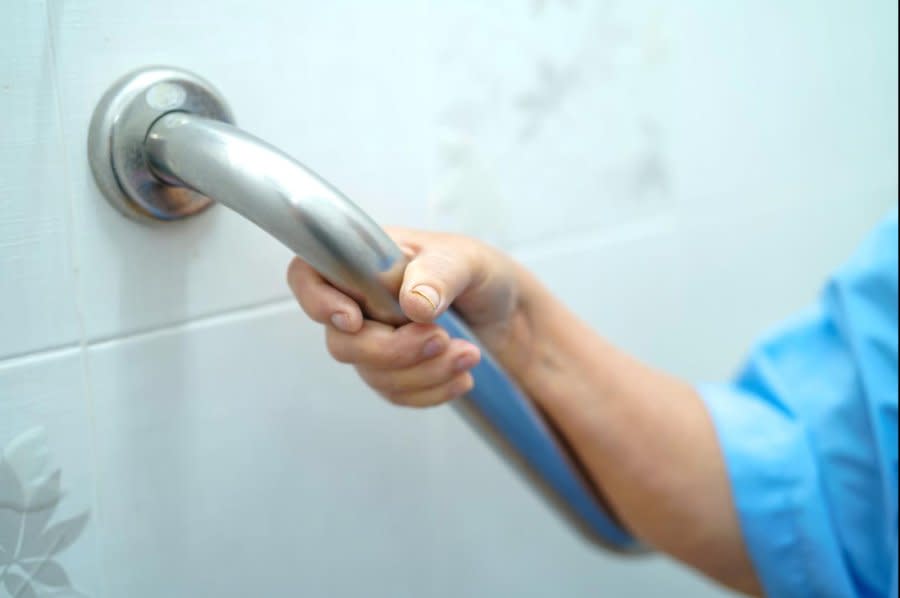Modifying homes helps stroke survivors stay independent

Everyday tasks like taking a shower or navigating stairs can be risky business for folks in the aftermath of a stroke.
But grab bars, shower seats, ramps and other safety interventions allow many to live independently and reduce the risk of premature death, new research confirms.
One in eight stroke survivors die within a year of leaving the hospital.
"The transition period is a critical time for stroke survivors who go home after weeks in inpatient rehabilitation," said senior study author Susan Stark, a professor of occupational therapy, neurology and social work at Washington University School of Medicine in St. Louis. "The home environment looks different and is more challenging than a facility outfitted with accommodations."
Her team tested a St. Louis program in which occupational therapists visit stroke survivors' homes.
The visiting therapists look for barriers, such as low toilets or stairs without handrails, and then make improvements that address a patient's individual needs. They also teach stroke survivors how to solve problems, such as finding accessible transportation.
Stroke patients with minor physical and mental impairments typically go to outpatient rehab after leaving the hospital. Those with severe damage typically go to a skilled nursing facility for continuous care and therapy.
Stark's study focused on the 25% of patients somewhere in between -- those with moderate mental and physical impairments. These patients typically head to inpatient rehab to prepare for life on their own.
But their lives at home won't be the same, researchers noted.
A simple task like pulling a shirt from the laundry basket tests muscles weakened by a stroke. Compromised balance makes using the toilet a challenge, and climbing stairs may seem like an obstacle course.
Such challenges are a barrier to reengaging with friends and neighbors and a recipe for depression, researchers pointed out.
"People become even more depressed when they don't reengage in their community," Stark said in a university news release.
To learn more, her team studied how 183 stroke patients age 50 or older made the transition from inpatient rehab to life at home.
Participants were randomly divided into two groups: One received home modifications and self-management training. The other received stroke prevention training.
The takeaway: Clearing away obstacles and teaching patients to solve problems saves lives.
During the study, recently published in the Archives of Physical Medicine and Rehabilitation, 10 people who received only stroke prevention training died; no one in the intervention group did. Those who received home modifications and self-management training were also less likely to wind up in a skilled nursing facility.
Throughout the study, Donna Jones, who suffered a stroke in 2021, received modifications that gave her the confidence to live independently while regaining balance and learning new skills. She described it as life-changing.
"My modified bathroom gives me hope that my life is moving in the right direction," she said. "The practical tools and services I received are the foundation of my new journey. I have a new life. It's very different, and I love it."
Three months after her stroke, Jones received her doctoral degree in ethical leadership and employee development. Nine months after that, her right leg was amputated.
Neither has stopped her. Jones remains active in her community and enjoys event planning and travel.
"I am grateful for the study that provided the foundation for me to approach my future with a positive outlook," she said.
Stark said the intervention needs to be tested more broadly and the costs and savings associated with home modifications must be defined to win over insurers. No system is in place to cover the cost.
"The biggest barrier to implementing this program is getting insurance to reimburse the cost of home modifications," she said. "If $500 in home modifications keeps people out of the hospital or a skilled nursing facility, that seems like a no-brainer to me."
More information
Find out about the signs of stroke at the Stroke Awareness Foundation.
Copyright © 2024 HealthDay. All rights reserved.


